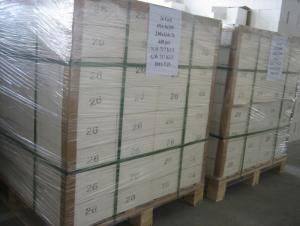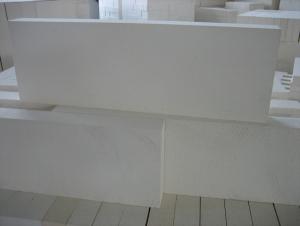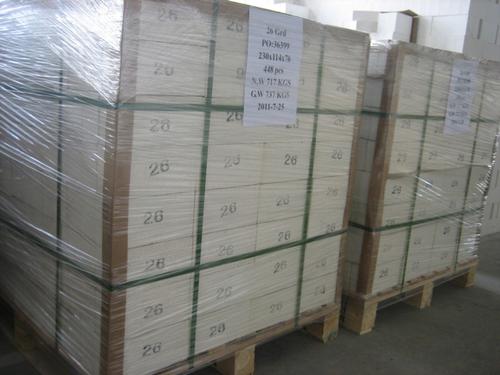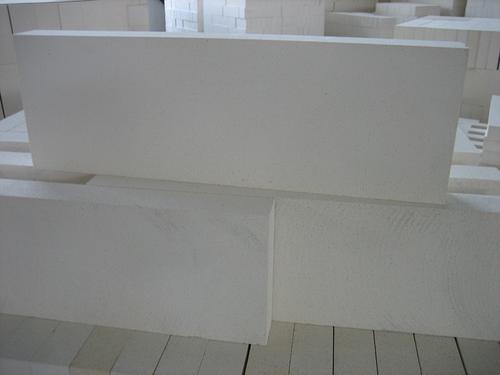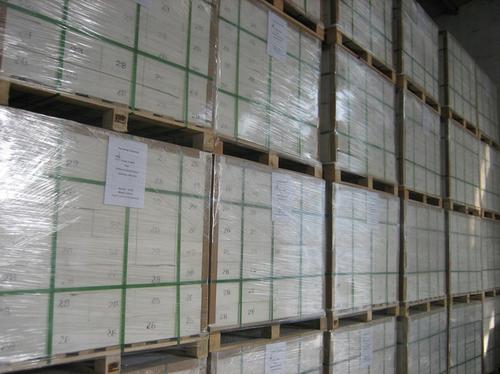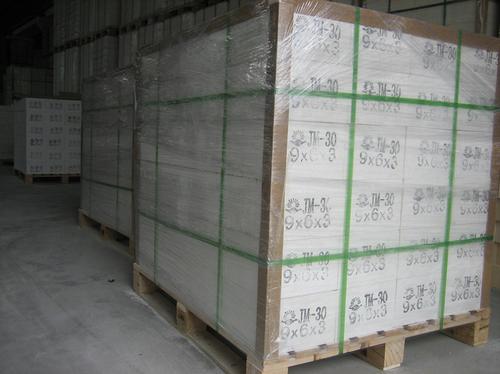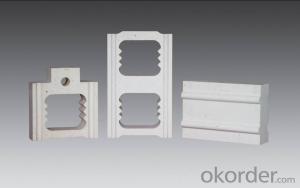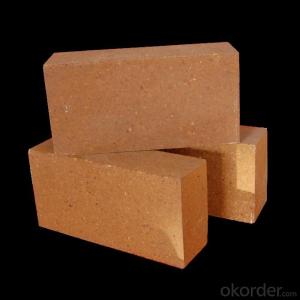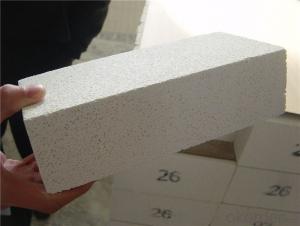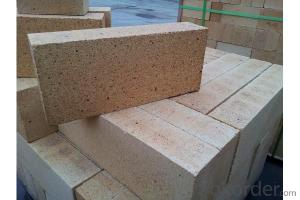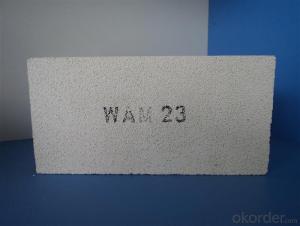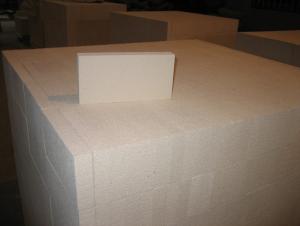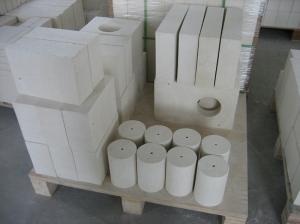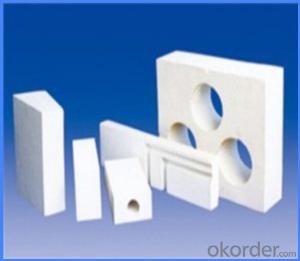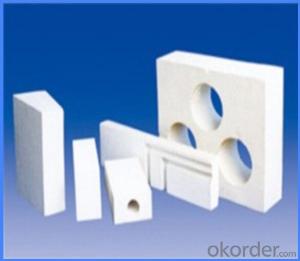Insulating Fire Brick - Refractory Mullite Insulating Refractory Brick JM 37
- Loading Port:
- Shanghai
- Payment Terms:
- TT OR LC
- Min Order Qty:
- 20 m.t.
- Supply Capability:
- 20 m.t./month
OKorder Service Pledge
OKorder Financial Service
You Might Also Like
Okorder series heat insulation brick
Okorder series thermal insulation brick is an effective, energy saving, low carbon, environmental protection advanced, according to the ASTM standard manufacturing products. Okorder series products have all kinds of materials in the field of metallurgy, industrial furnaces, aluminum, the best Li Ning petrochemical and insulation, electric power and glass ceramics. They can be used as part of an insulation or not to melt. Products have been widely used in the following furnace, achieved satisfactory results.
Application of heat preservation brick
Metallurgical Industry: blast furnace, hot blast furnace, heating furnace, etc..
Petrochemical Industry: ethylene cracking furnace, hydrogen furnace, the main furnace, heating furnace, etc..
Ceramic industry: roller kiln, kiln, etc..
Glass industry: glass furnace regenerator, etc.
Carbon industry: carbon furnace, etc..
Aluminum electrolysis industry: aluminum reduction cell, etc.
Other industries: tunnel kiln, shuttle kiln, etc..
Advantages of heat insulation brick
Low thermal conductivity: many air holes will bring good thermal insulation effect, energy saving.
High crushing strength: high crushing strength, volume stability.
Low heat storage: small heat storage, absorb more heat, energy-saving effect is obvious.
Chundu: High-speed Rail, low content of alkali metal impurities.
Accuracy: the size of the brick machining precision, cutting and grinding the special shape, speed up the brick.
Technical Data
ITEM | GJM30 | GJM28 | GJM26 | GJM23 |
Classification Temperature, ℉/℃ | 3000/1650 | 2800/1540 | 2600/1430 | 2300/1260 |
Bulk Density,g/cm³ | ≤1.0 | ≤0.9 | ≤0.8 | ≥0.5 |
Reheating Linear Change, % | ≤0.9 (1550℃,12 h) | ≤0.8 (1510℃,12 h) | ≤0.7 (1410℃,12 h) | ≤0.5 (1230℃,12 h) |
Al2O3 Content, % | ≥75 | ≥65 | ≥55 | ≥45 |
Fe2O3 Content, % | ≤0.5 | ≤0.6 | ≤0.7 | ≤1.0 |
Thermal Conductivity: | ||||
800℃, w/m.k | ≤0.39 | ≤0.37 | ≤0.35 | ≤0.18 |
1000℃, w/m.k | ≤0.43 | ≤0.41 | ≤0.39 | ≤0.20 |
1200℃, w/m.k | ≤0.48 | ≤0.46 | ≤0.43 | --- |
Insulating brick
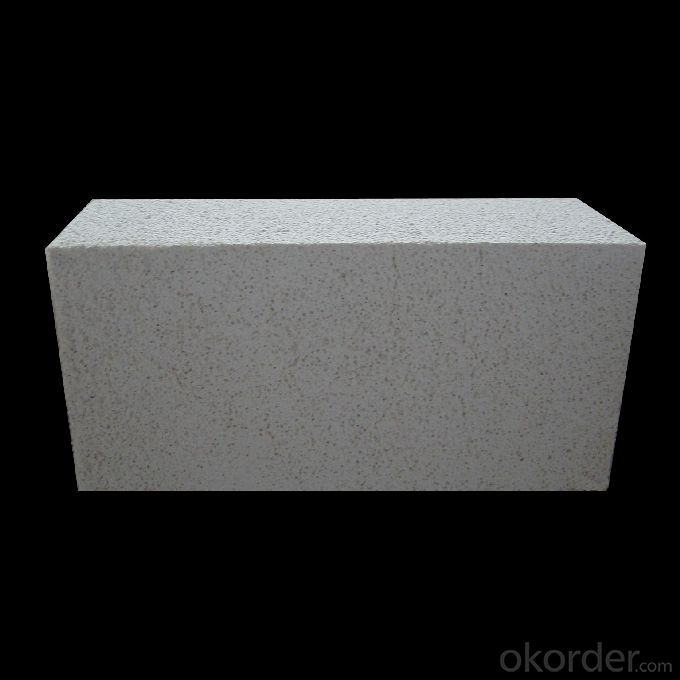
- Q: Can insulating fire bricks be used in the construction of boilers for power plants?
- Yes, insulating fire bricks can be used in the construction of boilers for power plants. Insulating fire bricks are specifically designed to have low thermal conductivity, which allows them to retain heat and prevent energy loss. This property makes them ideal for use in high-temperature applications such as power plant boilers, where efficient heat transfer is crucial for the production of steam and generation of electricity. Additionally, insulating fire bricks are lightweight and have good thermal shock resistance, making them suitable for the demanding conditions found in power plants. Overall, the use of insulating fire bricks in the construction of boilers can help improve energy efficiency and reduce heat loss, leading to increased operational performance and cost savings in power plants.
- Q: Are insulating fire bricks suitable for applications requiring low thermal conductivity?
- Yes, insulating fire bricks are suitable for applications requiring low thermal conductivity. These bricks are designed to have excellent insulation properties, allowing them to effectively minimize heat transfer and maintain low thermal conductivity. They are commonly used in industries such as metallurgy, ceramics, and glass manufacturing, where thermal insulation is crucial for efficient and controlled processes.
- Q: Do insulating fire bricks have a low coefficient of thermal expansion?
- Insulating fire bricks possess a low coefficient of thermal expansion, implying minimal expansion and contraction upon encountering high temperatures. These bricks are specifically engineered to endure extreme heat and retain their structural integrity. By resisting cracking and breaking caused by thermal stress, their low coefficient of thermal expansion renders them perfect for various applications, including insulation in furnaces, kilns, and other environments demanding thermal stability.
- Q: What is the typical thermal expansion coefficient of an insulating fire brick?
- The typical thermal expansion coefficient of an insulating fire brick is around 0.5-1.0 x 10^-6 per degree Celsius.
- Q: Can insulating fire bricks be used in residential construction?
- Yes, insulating fire bricks can be used in residential construction. They are commonly used to line fireplaces, wood-burning stoves, and other heating appliances in homes. These bricks are designed to withstand high temperatures and provide excellent thermal insulation, making them suitable for residential applications where heat retention and fire protection are important factors.
- Q: Can insulating fire bricks be used for insulation in steam pipes?
- Yes, insulating fire bricks are a suitable option for insulation in steam pipes. These bricks are specifically designed to withstand high temperatures and provide excellent thermal insulation. They have low thermal conductivity, which means they prevent the transfer of heat effectively. This property makes them ideal for insulating steam pipes, as it helps to minimize heat loss and maintain the temperature of the steam inside the pipes. Additionally, insulating fire bricks are lightweight and easy to install, making them a convenient choice for insulating steam pipes.
- Q: Can insulating fire bricks be used in the construction of smelters or foundries?
- Yes, insulating fire bricks can be used in the construction of smelters or foundries. Insulating fire bricks have excellent thermal insulation properties and can withstand high temperatures, making them suitable for lining the walls and floors of smelters or foundries. They help to retain heat, improve energy efficiency, and protect the surrounding structures from extreme temperatures.
- Q: Can insulating fire bricks be used in pizza ovens or outdoor grills?
- Indeed, insulating fire bricks are perfectly suitable for utilization in pizza ovens or outdoor grills. These bricks are specifically designed to withstand elevated temperatures and offer exceptional insulation properties, rendering them highly desirable for applications that demand intense heat, such as pizza ovens or grills. By incorporating insulating fire bricks, one can guarantee even distribution and retention of heat within the cooking area, resulting in a more efficient cooking process and delectable food. Furthermore, these bricks possess remarkable durability and resistance to thermal shock, allowing them to endure repeated exposure to extreme temperatures without cracking or deteriorating. Consequently, opting to use insulating fire bricks in pizza ovens or outdoor grills represents a superb choice for achieving optimal heat retention and superior cooking performance.
- Q: Can insulating fire bricks be used in the construction of flue liners?
- Flue liners can indeed incorporate insulating fire bricks. These bricks are specifically designed to endure high temperatures and offer exceptional insulation qualities. They are produced using lightweight materials like vermiculite or perlite, which possess minimal thermal conductivity. As a result, they are well-suited for lining flues as they effectively retain heat and enhance the flue system's efficiency. Moreover, insulating fire bricks exhibit resistance to thermal shock and can withstand sudden changes in temperature, a crucial factor in flue applications where temperatures may vary significantly. In conclusion, the use of insulating fire bricks in flue liner construction greatly enhances the flue system's performance and safety.
- Q: Do insulating fire bricks require special storage conditions?
- Special storage conditions are not necessarily required for insulating fire bricks, but it is recommended to keep them in a well-ventilated, dry, and cool area. These bricks are made from lightweight materials that are designed to endure high temperatures and provide heat insulation. However, excessive moisture or exposure to extreme temperatures can potentially impact their performance and durability. It is advisable to shield the bricks from direct sunlight or rain, as extended exposure to these elements might cause harm. Additionally, arranging the bricks in an orderly manner and keeping them away from sharp objects or heavy loads can prevent any potential damage or deformation. In summary, while special storage conditions may not be compulsory, taking appropriate precautions can aid in preserving the quality and lifespan of the insulating fire bricks.
Send your message to us
Insulating Fire Brick - Refractory Mullite Insulating Refractory Brick JM 37
- Loading Port:
- Shanghai
- Payment Terms:
- TT OR LC
- Min Order Qty:
- 20 m.t.
- Supply Capability:
- 20 m.t./month
OKorder Service Pledge
OKorder Financial Service
Similar products
Hot products
Hot Searches
Related keywords
